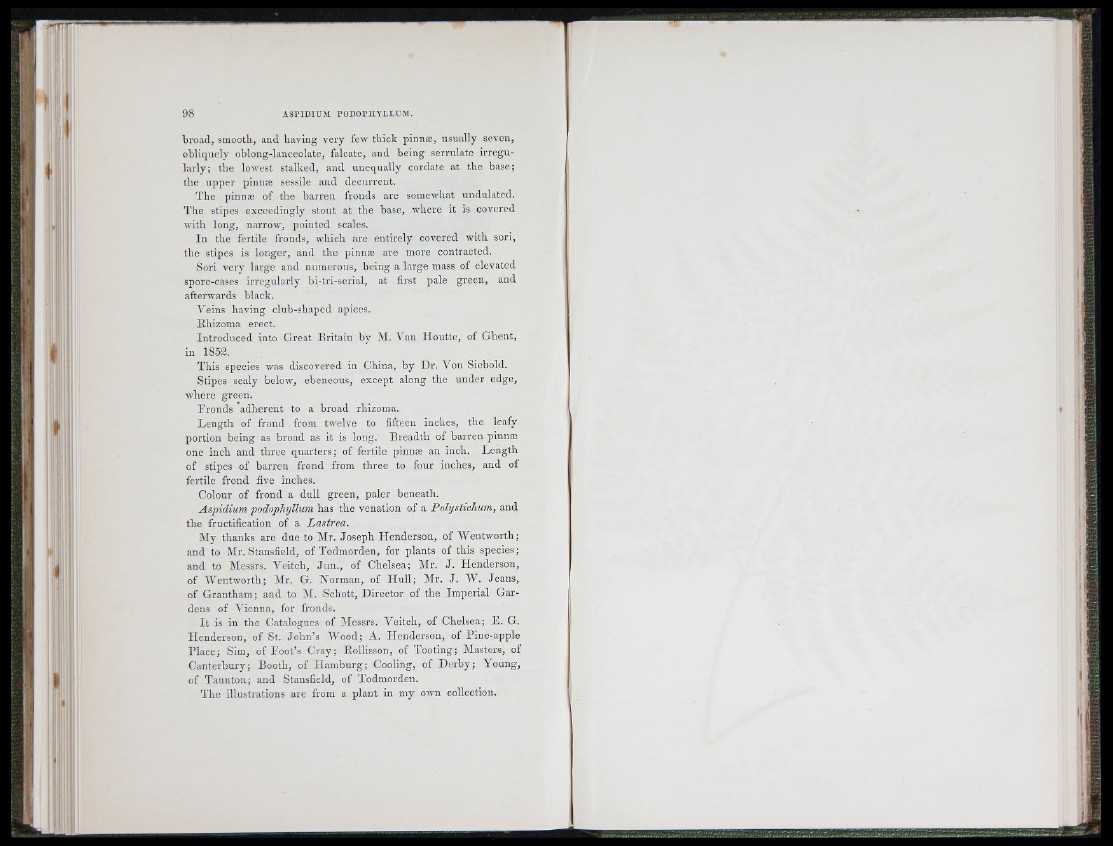
1 I
broad, smooth, and having very few thick pinnæ, usually seven,
obliquely oblong-lanceolate, falcate, and being serrulate irregularly;
the lowest stalked, and unequally cordate at the base;
the upper pinnæ sessile and decurrent.
The pinnæ of the barren fronds are somewhat undulated.
The stipes exceedingly stout at the base, where it is covered
with long, narrow, pointed scales.
In the fertile fronds, which are entirely covered with sori,
the stipes is longer, and the pinnæ are more contracted.
Sori very large and numerous, being a large mass of elevated
spore-cases irregularly bi-tri-serial, at fii'st pale green, and
afterwards black.
Veins having club-shaped apices.
Ehizoma erect.
Introduced into Great Britain by M. Van Houtte, of Ghent,
in 1852.
This species was discovered in China, by Dr. Von Siebold.
Stipes scaly below, ebeneous, except along the under edge,
where green.
Fronds adherent to a broad rhizoma.
Length of frond from twelve to fifteen inches, the leafy
portion being as broad as it is long. Breadth of barren pinnæ
one inch and three quarters; of fertile pinnæ an inch. Length
of stipes of barren frond from three to four inches, and of
fertile frond five inches.
Colour of frond a dull green, paler beneath.
Aspidium podophyllum has the venation of a Polystichum, and
the fructification of a Lastrea.
My thanks are due to Mr. Joseph Henderson, of Wentworth;
and to Mr. Stansfield, of Todmorden, for plants of this species;
and to Messrs. Veitch, Jun ., of Chelsea; Mr. J . Henderson,
of Wentworth; Mr. G. Norman, of H u ll; Mr. J. W. Jeans,
of Grantham; and to M. Schott, Director of the Imperial Gardens
of Vienna, for fronds.
I t is in the Catalogues of Messrs. Veitch, of Chelsea; E. G.
Henderson, of St. Jo h n ’s Wood; A. Henderson, of Pine-apple
Place; Sim, of Foot’s Cray; Eollisson, of Tooting; Masters, of
Canterbury; Booth, of Hamburg; Cooling, of Derby; Young,
of Taunton; and Stansfield, of Todmorden.
The illustrations are from a plant in my own collection.
I,',I